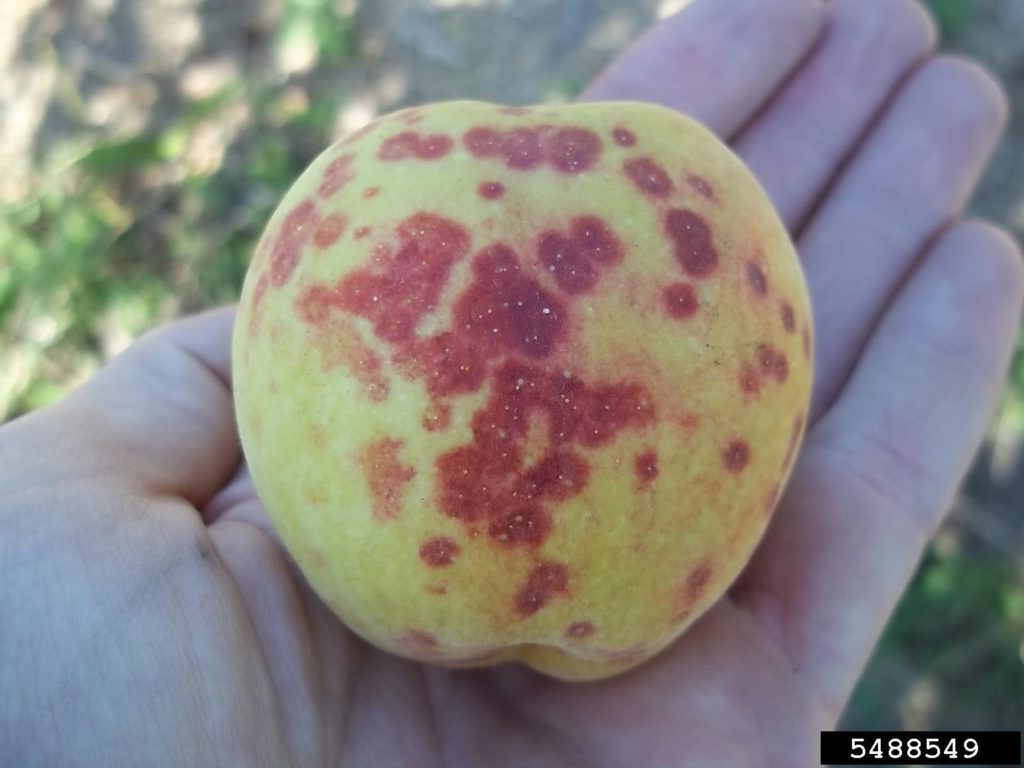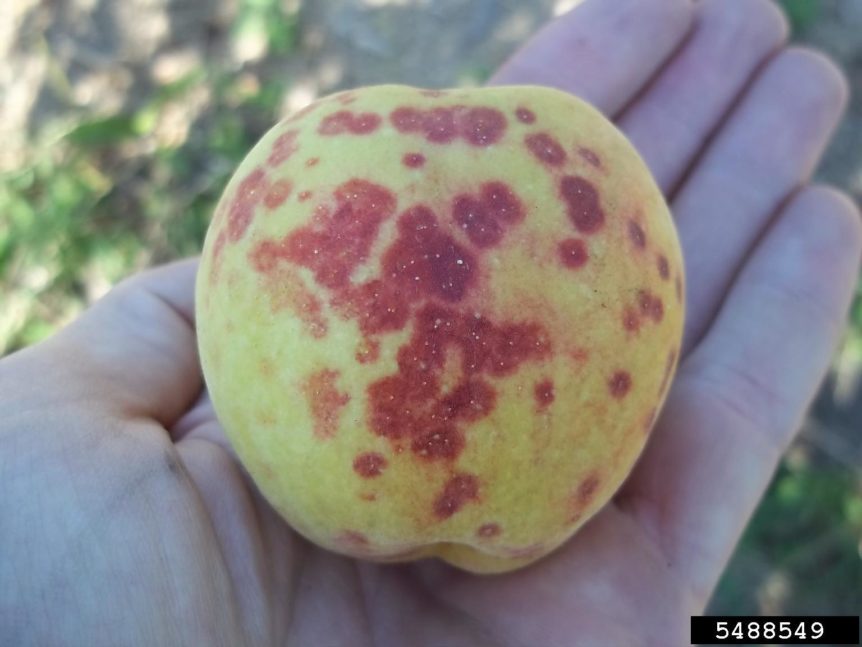
By Frank Giles
San Jose scale is one of the more problematic pests peach growers in the Southeast must manage. Since the early 2000s, San Jose scale has emerged as a one of the region’s most common and damaging pests.
Spread
The scale is a prolific breeder. According to the University of Georgia (UGA), the female can produce about 10 crawlers per day for two to three weeks when temperatures are conducive. The females give live birth to the crawlers in spring (typically early April). The crawlers can move considerable distances (6 to 12 feet) on their own and can be blown by the wind within orchards, adjacent orchards, hedgerows and wooded borders.
With three to four generations per year possible in the Southeast, large infestations can occur between harvest and the onset of winter. Infestations are encouraged by late-summer rainfall, which promotes new succulent leaf growth favorable for scale development.
“San Jose scale is an incessant pest that attacks the tree regardless of fruit set or crop yield,” said UGA entomologist Brett Blaauw. “As such, it requires annual management to keep these insects in check. Cutting back on management or being lax on sprays may allow populations to build up, causing more damage and making it harder to manage over time.”
Damage
San Jose scale can damage fruit by direct feeding and through honeydew secretions, which can produce sooty mold on the fruit and other parts of the plant. The pest feeds by piercing plants and sucking nutrients directly from the tree. This feeding can cause leaf chlorosis, twig or limb dieback and tree death if populations reach very high levels.
The pest prefers feeding on branches, but at high populations crawlers can settle and feed on the fruit. While this will not damage the fruit, it does produce small red lesions on the fruit, which is an unappealing cosmetic injury. Management will be required when scale lesions were present on the fruit the previous season or when scales are observed during pruning.
Management
Scouting for the presence of San Jose scale is the first step in a solid management program. According to UGA’s guidance, it is a good practice to mark heavily infested trees when they are detected. This can help growers and scouts monitor scale development during the season.
Pruning heavily infested branches also can reduce the abundance of the pest. Pruning trees to train them for a more open canopy can benefit management by improving spray coverage when chemical controls are applied.
The winter months are the best time to get ahead of scale populations. According to Blaauw, two applications of horticultural oil during tree dormancy are the most cost-effective management tool. These applications are considered prophylactic and should be applied to every acre, every year. The oil kills the scale by smothering it under its protective covering. Good coverage is critical to ensure adequate control.
The first oil application should be made early in the dormant season just after 95% of leaves have fallen off or early in the winter to reduce the burden that scale places on the peach tree. The second application should be applied as a delayed dormant spray as flower buds begin to swell and break, but before 5% pink bud. To avoid phytotoxicity to the buds, a reduced oil solution rate of 0.75–1.5% should be applied for the delayed dormant spray.
After the oil applications, in-season management of scale might be needed. This requires insecticide applications targeting the crawlers. While crawlers can occur nearly all season long, in Georgia, the peak periods typically occur in early May, late June and mid-August. Those peaks are when insecticide applications can be most effective.
Blaauw noted this season’s early crawler activity was delayed a bit due to relatively cool spring weather. But as temperatures warmed up, crawler activity ramped up.
“As a reminder, scale crawler activity can be monitored relatively easily (although a bit tedious). Visually inspect limbs for live scale and/or wrap a branch with a strip of electrical tape plus a strip of double-sided tape around that (to act as a sticky trap),” he noted in his April 15 UGA peach blog post. “Focus particularly on trees in blocks with a known history of scale issues.
“Once crawler activity begins to increase, consider with management insect growth regulators, such as Esteem (6 oz./acre) or Centaur (34.5 oz./acre). Alternatively, when targeting the scale crawlers, Venerate XC (2 qt./acre applied twice over 7-day period; 4 qt. total) or diatomaceous earth (i.e., Celite 610 at 10 lb./acre) have both showed efficacy at suppressing San Jose scale.
“If management occurs later, once the crawlers have already settled and/or you cannot find active crawlers in a block with a history of scale, it may be best to treat with Movento (check label rate). Note that Movento should be applied once the trees have substantial leaf area, flushing new growth, and should be tank-mixed with an adjuvant that has spreading and penetrating properties.”
Visit San Jose Scale to read more detailed instructions on San Jose scale management.










